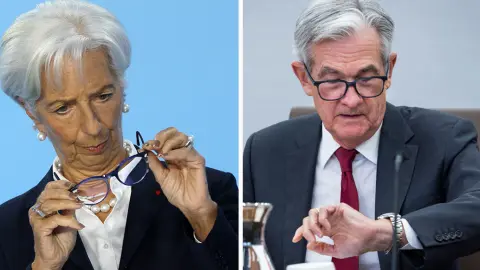CEE: struggling to stave off recession
We see signs of a recession in the region in the hard data, but inflation has yet to peak. Central banks are thus resisting pressure to raise rates further and are seeking a balance with expansionary fiscal policy. Although the overall picture is not as bad as first feared, risks are mounting as we head into winter
Poland: Will the MPC hike in November or not?
Consumer inflation continues to trend upward but selling pressure on the zloty (PLN) and Polish government bonds has abated, at least, for some time. Neither the theory of a summer peak in CPI inflation nor the scenario of an “inflation plateau” envisaged by the National Bank of Poland (NBP) have materialised. In October, CPI jumped by 17.9% year-on-year and rose 1.8% month-on-month. Sharp increases in food and petroleum prices were accompanied by higher prices of energy and further growth in core inflation. The latter confirms that higher costs of energy and transport are still being passed through to output prices. The majority of the Monetary Policy Council (MPC) is in favour of ending the tightening cycle but the CPI path in the November staff projection may convince policymakers to deliver another rate hike (25bp) next week. At the same time, we do not rule out that the Council might refrain from lifting rates, extending the pause initiated in September. It is going to be a close call.
September data indicates that the economy expanded by about 1% quarter-on-quarter (seasonally adjusted) in the third quarter of 2022, following a sharp 2.1% QoQ decline in the second quarter, with industry showing strong resilience to headwinds from softening external demand and poor sentiment. In 2022, the economy is projected to expand by around 4%, before slowing to about 1.5% as both supply and demand are hit by high prices and costs. External conditions are expected to cool and high interest rates should curb investment activity.
The zloty regained some ground as liquidity conditions lifted the cost of PLN financing and discouraged the building of short positions. Still, with high inflation ahead and the NBP reluctant to provide further monetary tightening, the PLN is expected to remain on the weaker side and may end the year closer to 4.90 as both the Federal Reserve and European Central Bank continue to tighten decisively.
Monetary policy rates in the CEE region

Czech Republic: First country in the region to enter recession
In the third quarter, the Czech economy posted its first contraction in quarterly terms since the first quarter of 2021 and is the first country in the region to open the door to a winter recession. Leading indicators show that the situation is continuing to deteriorate. Nevertheless, we expect the economy to return to growth early next year. We expect inflation to peak in October, just slightly above September's figure (18% YoY). Government measures to lower energy prices in the fourth quarter should help to artificially lower inflation.
On the monetary policy side, nothing has changed in our view. We expect interest rates to remain unchanged until at least the end of the first quarter of next year and then depending on inflation and the performance of the economy, we see the possibility of reopening the discussion on rate cuts. Although we see the Czech Republic as being the first country in the CEE region to end its hiking cycle, we see moderate risks for additional rate hikes stemming from higher wage growth and the cost of FX intervention, which we will continue to monitor closely.
More interesting is the situation on the fiscal side, where the government recently approved an increase in the state budget from CZK280bn to CZK375bn (5.2% of GDP) for this year and CZK295bn (3.7% of GDP) for next year. In addition, a number of proposed changes on both the revenue and expenditure sides have not yet been approved, adding to the uncertainty over increasingly expansionary fiscal policy.
On the market side, the selling pressure on Czech government bonds has subsided, however, given the rising bond supply, questions over fiscal policy and the risk of a sovereign rating downgrade, we believe CZGBs will see more pain. The Czech koruna, on the other hand, remains fully under the central bank's control. Although the Bank's FX intervention costs are rising, we believe the cushion is still large enough and do not expect any change in the coming months.
Hungary: The eye of a needle
It would be easier to get a camel through the eye of a needle than to guess what might come next in local money markets and economic policy. We agree with the market consensus that economic activity in Hungary is deteriorating, though hard evidence of this has been limited – a function of the time lag between reality and data releases. Soft indicators like manufacturing PMI and business confidence suggest a drop in industrial production. On the household side, decreasing real wage growth, a rising unemployment rate and recession fears are translating into lower consumer confidence, and thus retreating consumption. The high interest rate environment – despite investment support programmes and mortgage freezes – will affect new lending, creating a temporary gap in investment activity until new EU projects come online.
In all, we see two to three quarters of technical recession during late 2022 and early 2023, translating into 4.5% GDP growth this year and 0.4% next year, with downside risks. Though we see the peak in inflation in the first quarter of 2023, the normalisation will be relatively slow, keeping the yearly average higher (15.7% in 2023) than in the previous year (14.2%). Retreating inflation will be helped by moderating energy prices, which will also impact Hungary's external balance. We see a narrowing in the current account deficit during 2023, thus systematic pressure on the forint will be easing. This, along with falling inflation, might open the door for a turnaround in the base rate. However, in the short run, we expect the National Bank of Hungary to maintain its hawkish “whatever it takes” approach. The effective rate will remain at 18% until we see a marked improvement in the external and internal risk environment. The latter includes the agreement with the EU, which we expect to be signed during the second half of December, igniting a relief rally in Hungarian assets.
Romania: Not in the mood for a recession yet
While we don’t yet have a full picture of the third quarter, most of the high-frequency data has been rather upbeat, although the slowdown from the second quarter is notable. We’ve seen rather strong readings in construction and services, quasi-flat retail sales and a marginal contraction in industrial production, all underpinned by a still solid labour market. Incorporating all of this and presuming that the still missing third quarter data will come in on the softer side, it seems that our call for a GDP contraction versus the second quarter is too pessimistic and a small but positive quarterly expansion looks more likely. This is supported as well by the higher-than-expected data from the eurozone, by far Romania’s main trading partner.
On the monetary policy front, the shift higher in the level of the inflation peak and the rise from early in the third quarter towards year-end means that another hike from the National Bank of Romania (NBR) at the 8 November meeting is a done deal. We currently favour a 50bp hike to 6.75% and an “open-ended” press release, with little-to-no forward guidance. While we narrowly favour the scenario of no more hikes into 2023, another 25bp hike in January cannot be excluded. This hiking decision will be data-dependent and – if taken – should mark the end of the hiking cycle.
Though rather small by most standards, the volatility of the EUR/RON FX rate has been rather eye-catching lately. Unlike in August when the EUR/RON marked a pronounced V-shaped pattern, the appreciation of the leu seems to be more sustainable this time. We believe that this suits the central bank's circumstantial objectives regarding inflation and firm liquidity management. A year-end FX rate closer to 4.90 rather than 4.95 looks plausible now.
This publication has been prepared by ING solely for information purposes irrespective of a particular user's means, financial situation or investment objectives. The information does not constitute investment recommendation, and nor is it investment, legal or tax advice or an offer or solicitation to purchase or sell any financial instrument. Read more
Tags
CEEDownload
Download article
4 November 2022
ING’s November Monthly: The long wait for the pivot This bundle contains 14 Articles


